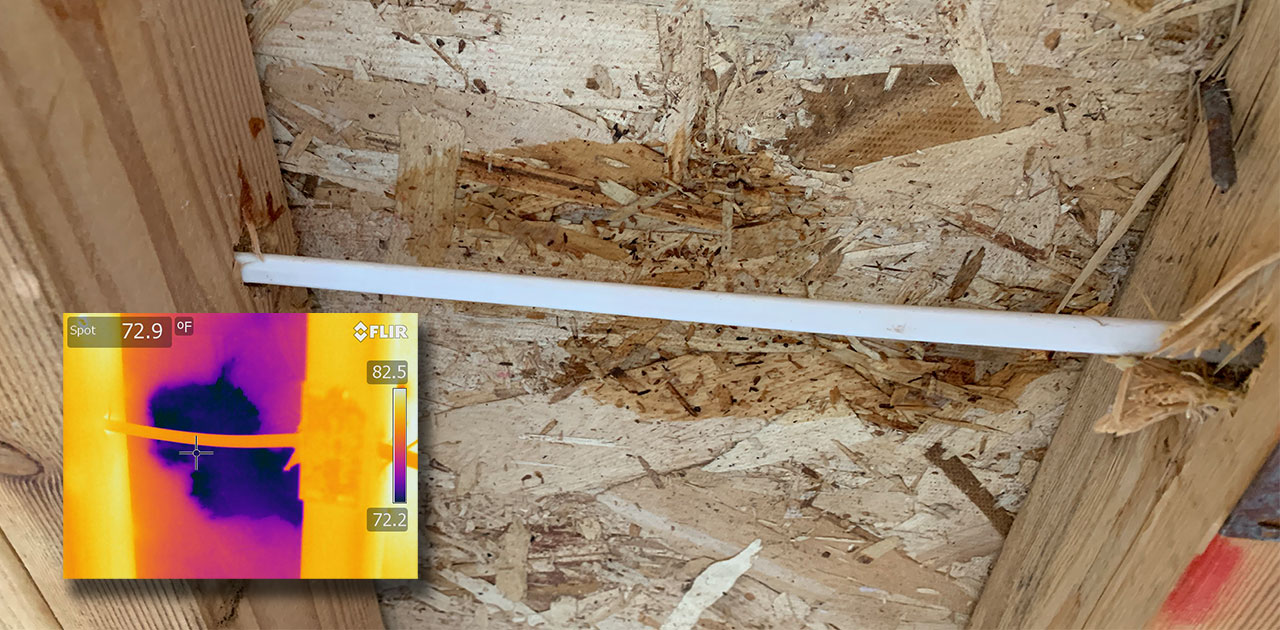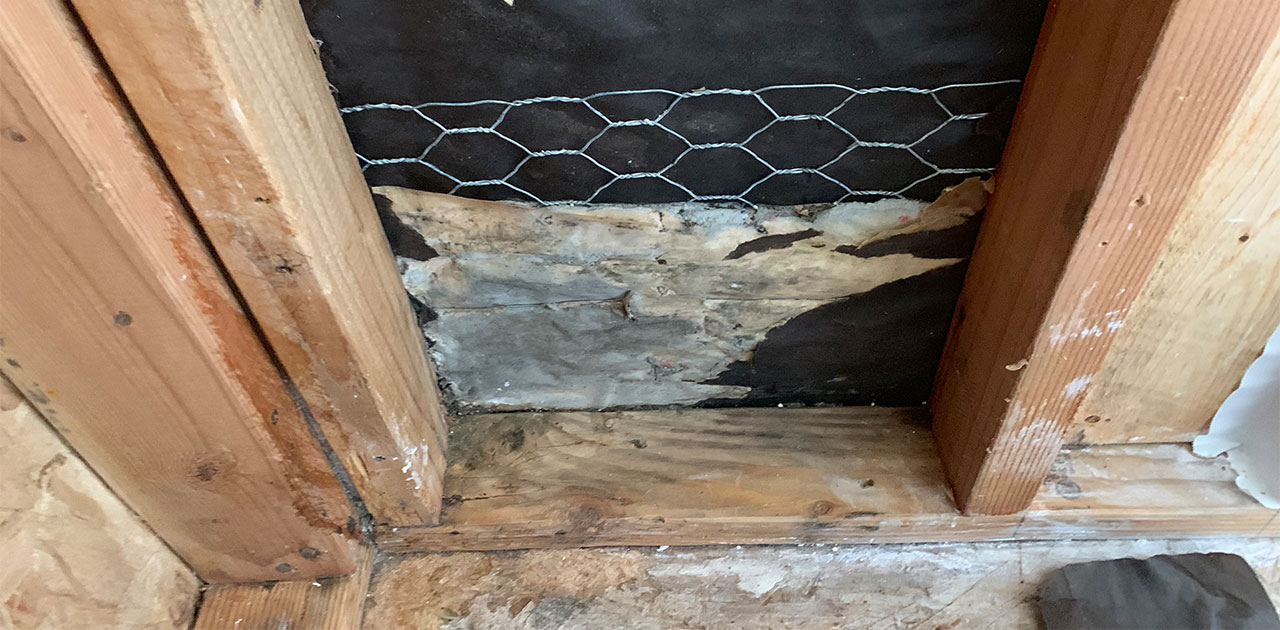Stucco Wall Leak and Rain leak testing in Los Angeles
Believe it or not, water leaking through stucco walls is extremely common in Los Angeles homes. Despite what many people think, stucco is not 100% waterproof and will leak due to either poor workmanship, old age, and/or severe weather. That is why a stucco wall system is comprised of an additional protective layer behind the stucco coat itself and it is known as the weather resistive barrier, which lies between the stucco and interior surfaces.
Our company performs stucco wall leak and rain leak detection throughout Los Angeles and the greater LA area. We test stucco wall systems on a regular basis, and just during the rainy season.
What causes Stucco Wall Rain Leaks?

Water leaking through OSB building materials
There are many causes of stucco leaks. However, we can narrow the top 5 reasons here!
TOP 5 Reasons Stucco Walls have Water Intrusion:
- Holes in the building wrap (building paper)
- Deteriorated building wrap (building paper)
- Rusted nails and corroded mechanical fasteners in the building wrap (building paper)
- Other penetrations into the building wrap (building paper)
- Defective stucco application leading to severe cracking
As much as we love performing stucco wall leak detection in Los Angeles, it’s a very difficult task. As a matter of act, it has to be one of the most difficult rain leak tests we perform on buildings. Often times there are also significant costs to remove interior finishes so that physical observation can be made as to where the stucco is leaking. With that said, stucco water leak detection takes time. How much time? Well, the average test for an 8-foot x 8-foot area is over an hour and we must also thoroughly document all of our findings for a proper water intrusion test.
Contrast this to an AAMA window water intrusion test. These tests run roughly 15-20 minutes for the same 8-foot x8-foot foot section.
Water leaking through stucco walls

Missing and Damaged Building Paper
So you can imagine how surprised we were to find a stucco wall leak when we were scheduled to test windows or areas higher up. Because of our test of the roof, secondary water running down the wall made its way into the building. Likewise, our window test provided the exact same results. Water into the building from stucco leaks.
Naturally, our next step was to isolate the wall in various locations and perform isolated stucco wall testing. Obviously, our goal is to source water leaking through stucco walls. Hence, the need for isolation. We selected random areas to be rain leak and stucco leak tested.
As seen in these results, water penetrated the stucco wall in multiple locations throughout. In the end, our client decided to have the entire house re-stuccoed.
